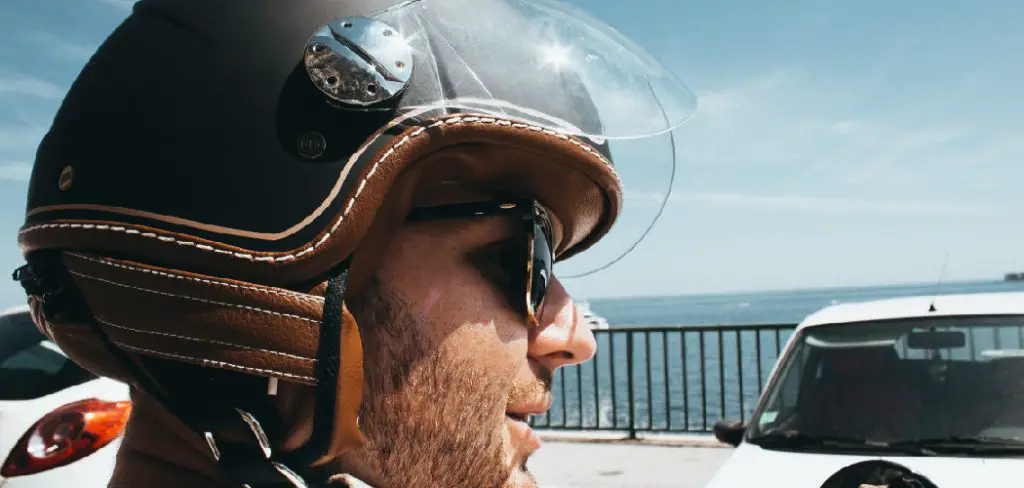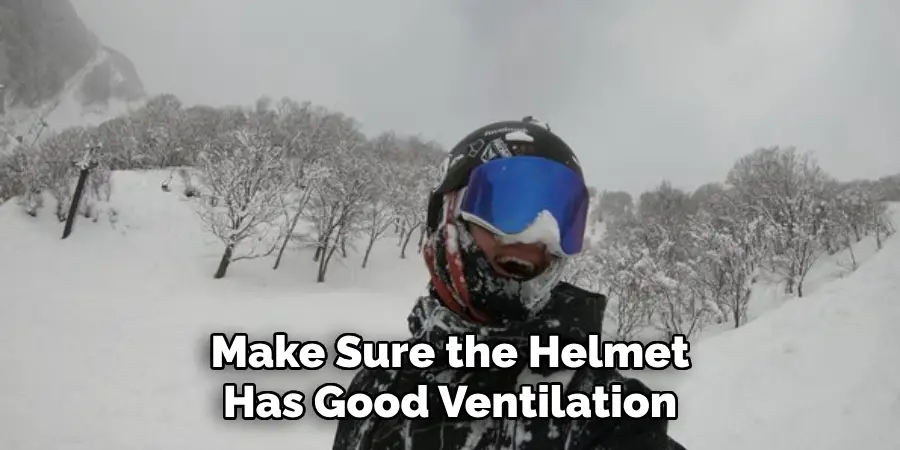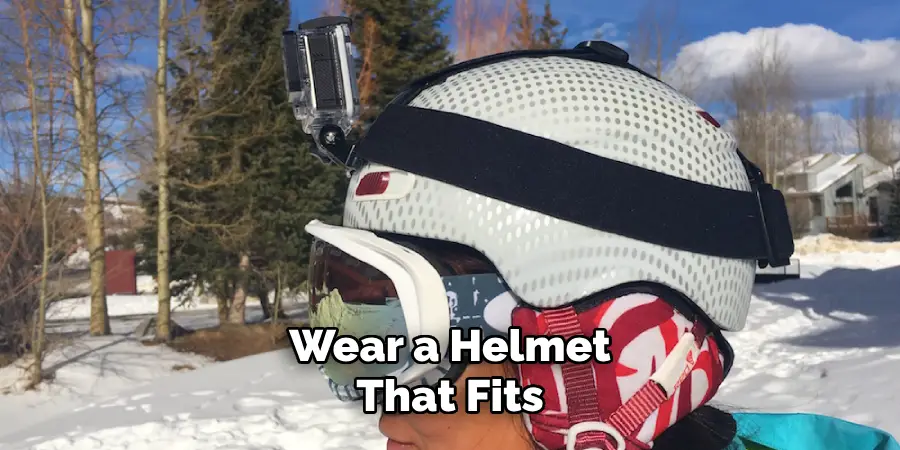Are you an adventurous person who loves skiing, snowboarding, or biking? If yes, then you must know the importance of wearing goggles while engaging in these activities. However, it can be quite challenging to wear goggles under a helmet without feeling uncomfortable or compromising on safety.
When it comes to ensuring safety and comfort while riding, knowing how to properly wear goggles under a helmet is essential. Whether you’re a motorcyclist, cyclist, or an off-road enthusiast, the correct placement of goggles can protect your eyes from debris, wind, and other elements without compromising the fit and security of your helmet.

In this guide on how to wear goggles under helmet, we’ll walk you through the steps to achieve a snug, effective fit for both your goggles and helmet, enhancing your overall riding experience.
Why Do You Need to Wear Goggles Under Helmet?
Goggles are an essential piece of gear for any outdoor activity, especially high-speed sports like skiing, snowboarding, or biking. They provide protection and visibility, keeping your eyes safe from wind, dust, debris, and harmful UV rays.
Wearing goggles under a helmet ensures that they stay securely in place during the ride. Without goggles, you may experience discomfort from wind or debris getting into your eyes.
Moreover, wearing them over a helmet can cause the helmet straps to move out of place and reduce its effectiveness in case of a fall or impact.
What Will You Need?
Before we jump into the steps, let’s ensure you have all the necessary gear. To properly wear goggles under a helmet, you’ll need to have:
- A well-fitting helmet
- Goggles
- A balaclava or beanie (optional)
- Chinstrap for your helmet (if applicable)
Once you have all the gear in place, let’s get started!
10 Easy Steps on How to Wear Goggles Under Helmet
Step 1: Wear the Helmet First
First things first, put on your helmet. Ensure that it is snug yet comfortable and has a secure fit. The chin strap should be fastened tightly enough to prevent the helmet from moving around while riding but not too tight that it causes discomfort. If you’re wearing a balaclava or beanie, make sure to put it on before the helmet.
Step 2: Adjust the Goggles
It’s time to adjust your goggles with your helmet securely in place. Take your goggles and place them over your eyes. Position the strap around the back of your helmet, ensuring it lies flat and isn’t twisted. This step is crucial because a twisted strap can cause discomfort and uneven pressure, potentially leading to headaches or impaired vision. If your helmet has a clip or hook at the back specifically for securing goggle straps, make sure to use it to keep the strap stable and centered.
Adjust the strap tightness so the goggles fit snugly against your face without being too tight. The foam padding on the goggles should create a seal around your eyes without causing pressure points. This seal is essential for keeping out wind, dust, and debris.

Additionally, ensure no gap exists between the top of the goggles and the helmet. A gap can not only let in cold air and moisture but also compromise the overall stability of your eyewear. If there is a gap, try readjusting the helmet or goggles until the two fit together seamlessly.
Step 3: Secure the Goggles
Secure the goggle strap once your goggles are in place and comfortably adjusted. If your helmet has a clip or hook at the back specifically for securing goggle straps, make sure to use it to keep the strap stable and centered. This added security prevents the goggles from shifting during your ride.
Step 4: Check Visibility
Ensure that your visibility is clear and unobstructed. Look around to ensure the helmet or goggle frames do not impede your vision. The goggles should sit flush against your face and helmet, providing a wide field of view.
Step 5: Perform a Comfort Check
With both your helmet and goggles in place, do a quick comfort check. Move your head around to ensure that there’s no pinching, pressure points, or discomfort. The fit should feel secure yet comfortable, allowing you to move without any hindrance.
Step 6: Ensure Proper Ventilation
Proper ventilation is vital for maintaining comfort and preventing your goggles from fogging up during your ride. Most modern helmets and goggles are designed with ventilation systems that work in tandem to promote airflow. Ensure that the vents on your helmet align with those on your goggles. This alignment maximizes air circulation, helping to reduce fog buildup on the inside of the goggle lenses. Fog-free lenses are crucial for maintaining clear visibility and avoiding any potential hazards.
Step 7: Adjust for Comfort
After ensuring proper ventilation, take a moment to adjust everything for maximum comfort. The goggles should fit snugly but not so tightly that they cause any discomfort. If you feel pressure points or anything digging into your skin, make small adjustments to relieve these areas. This might mean loosening the goggle strap slightly or readjusting the position of your helmet.
Step 8: Secure the Chinstrap
Double-check that your helmet’s chin strap is securely fastened. The chin strap should be tight enough to keep the helmet in place but should still allow you to open your mouth comfortably. A properly fastened chinstrap helps to stabilize your helmet and goggles, preventing unwanted movement during your ride.

Step 9: Do a Final Check
Perform a final check of your entire setup before heading out. Ensure that your goggles and helmet are securely fastened and comfortable. Check for any signs of discomfort, pressure points, or gaps between them. If everything feels right, you are ready to start your adventure.
Step 10: Test Ride
Before embarking on a long ride, doing a short test ride is a good idea. This will help you to identify any issues with your goggles or helmet setup that need to be addressed. Pay attention to how the goggles perform. Is there any fogging or slipping? Is your visibility clear? Does the fit remain comfortable throughout? Small adjustments can make a significant difference in the overall comfort and safety of your ride.
Following these steps carefully ensures that your gear fits securely and comfortably, providing optimal protection and enhancing your riding experience.
5 Additional Tips and Tricks
- Adjust the Strap: Ensure the goggle strap is adjustable and fits comfortably around the helmet. A loose strap can cause the goggles to shift, impairing your vision.
- Anti-Fog Coating: Opt for lenses with an anti-fog coating to prevent your goggles from fogging up. Additionally, make sure the helmet has good ventilation to facilitate proper airflow.
- Correct Placement: Position the goggles on your face first, then put on your helmet. This technique ensures the goggles sit properly on your face and are not dislodged when you wear the helmet.
- Regular Adjustments: Throughout your activity, take short breaks to adjust the goggles and helmet as needed. Continuous movement can cause them to shift, so regular checks will maintain comfort and stability.
- Check the Weather: Before heading out for any outdoor activity, always check the weather forecast and adjust your gear accordingly. For example, wear goggles with darker lenses to reduce glare if it’s sunny and bright. If it’s overcast, choose lighter-tinted lenses for better visibility.

Following these additional tips and tricks ensures your goggles and helmet work together effectively to provide maximum protection and comfort during any outdoor activity.
5 Things You Should Avoid
- Wearing Loose Straps: Avoid using goggles with loose or improperly adjusted straps. These straps can slide down your face or become dislodged, compromising your vision and safety.
- Neglecting Helmet Fit: Do not wear a helmet that doesn’t fit snugly over your goggles. An ill-fitting helmet can press down on the goggles, causing discomfort and restricting airflow, which may lead to fogging.
- Foregoing Anti-Fog Measures: Do not overlook the importance of anti-fog measures. Using goggles without an anti-fog coating or failing to ensure proper ventilation in your helmet can result in foggy lenses, impairing your visibility.
- Improper Sequence of Wearing Gear: Avoid putting on your helmet before your goggles. This sequence can make it difficult to fit the goggles properly on your face and may result in an uncomfortable and insecure fit.
- Ignoring Strap Adjustments: Do not ignore the need to adjust the straps of your helmet and goggles. Straps that are too tight can cause headaches and discomfort, while loose straps may lead to instability and poor performance.
By steering clear of these common mistakes, you can ensure greater comfort, safety, and effectiveness when wearing goggles under a helmet during outdoor activities.

Conclusion:
In conclusion, how to wear goggles under helmet requires careful attention to fit, adjustment, and environmental conditions to optimize both safety and comfort.
Ensuring that the strap is properly adjusted, selecting goggles with anti-fog features, and following the correct sequence for donning your gear are crucial steps. Regularly adjusting your equipment during activity can also help maintain its effectiveness. Equally important is the need to avoid common pitfalls like wearing loose straps or ignoring the significance of weather conditions.
Adhering to these guidelines and preventive measures can help you enjoy outdoor activities more safely and comfortably, with clear visibility and secure gear.
You can also check it out to Measure for Barn Door Hardware
